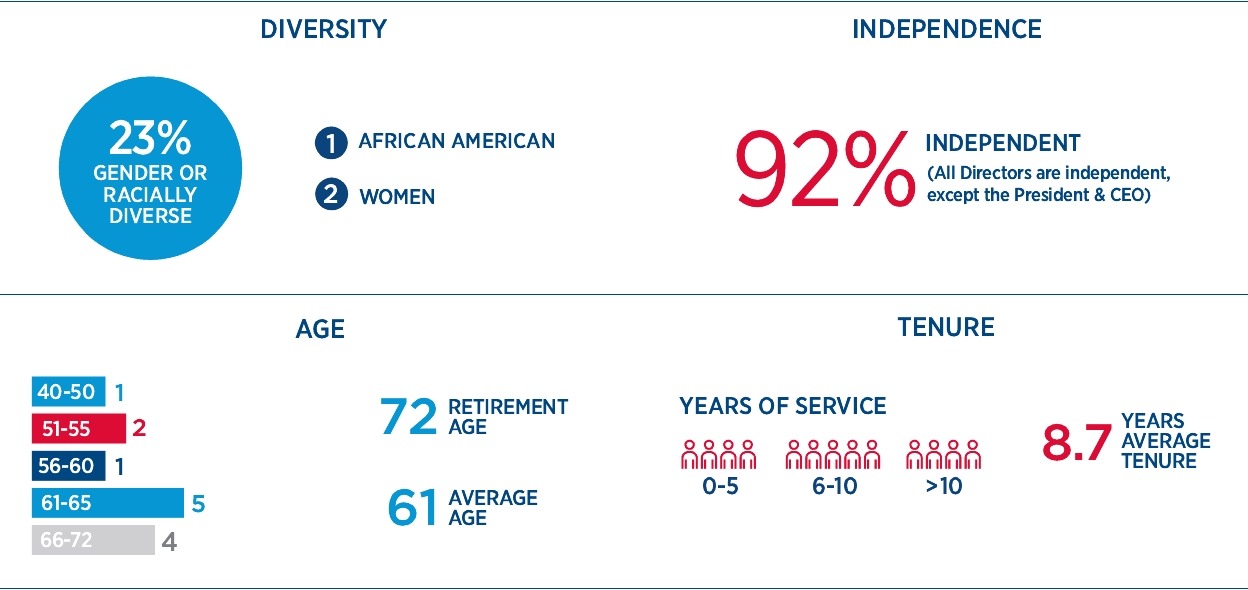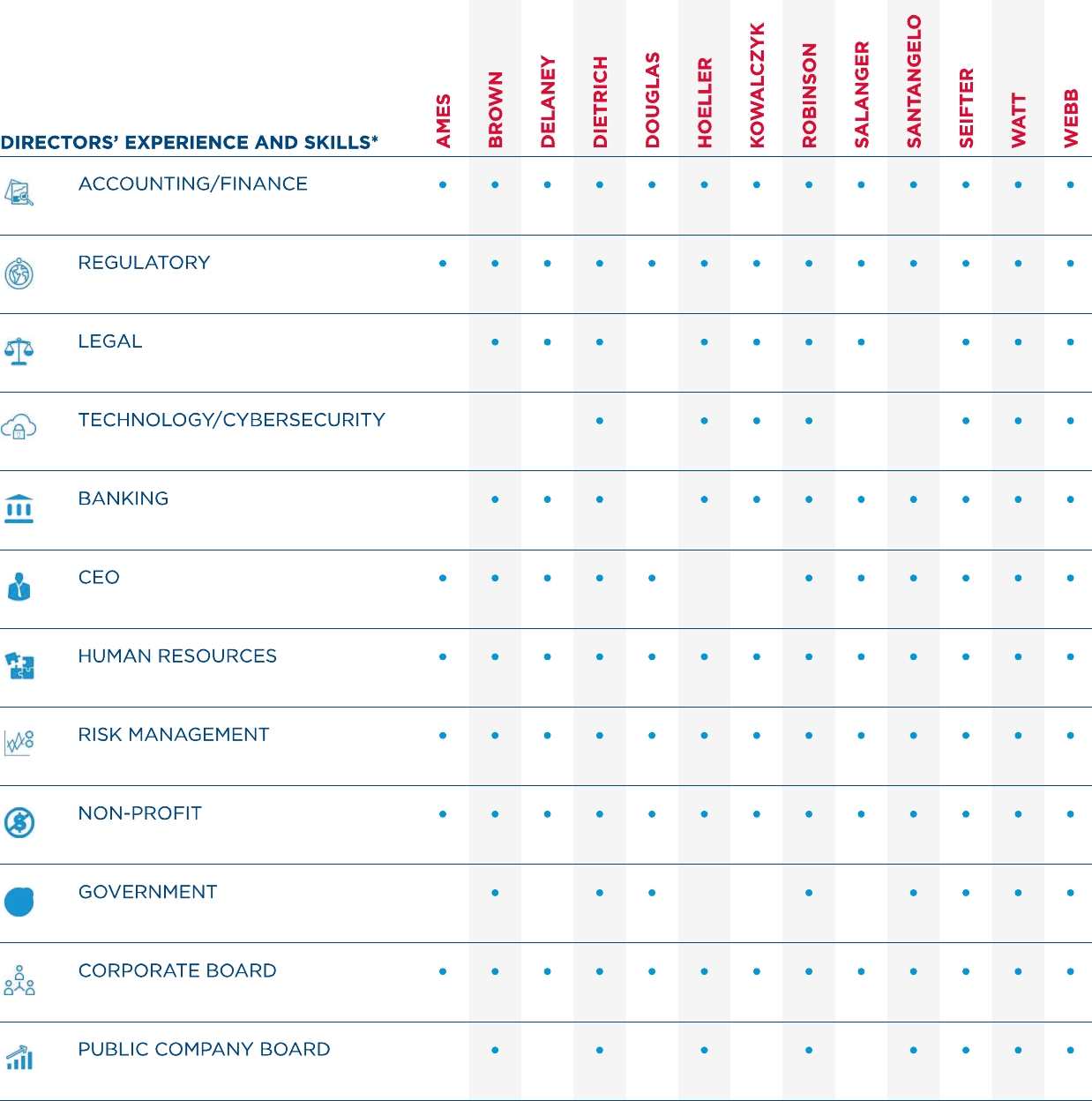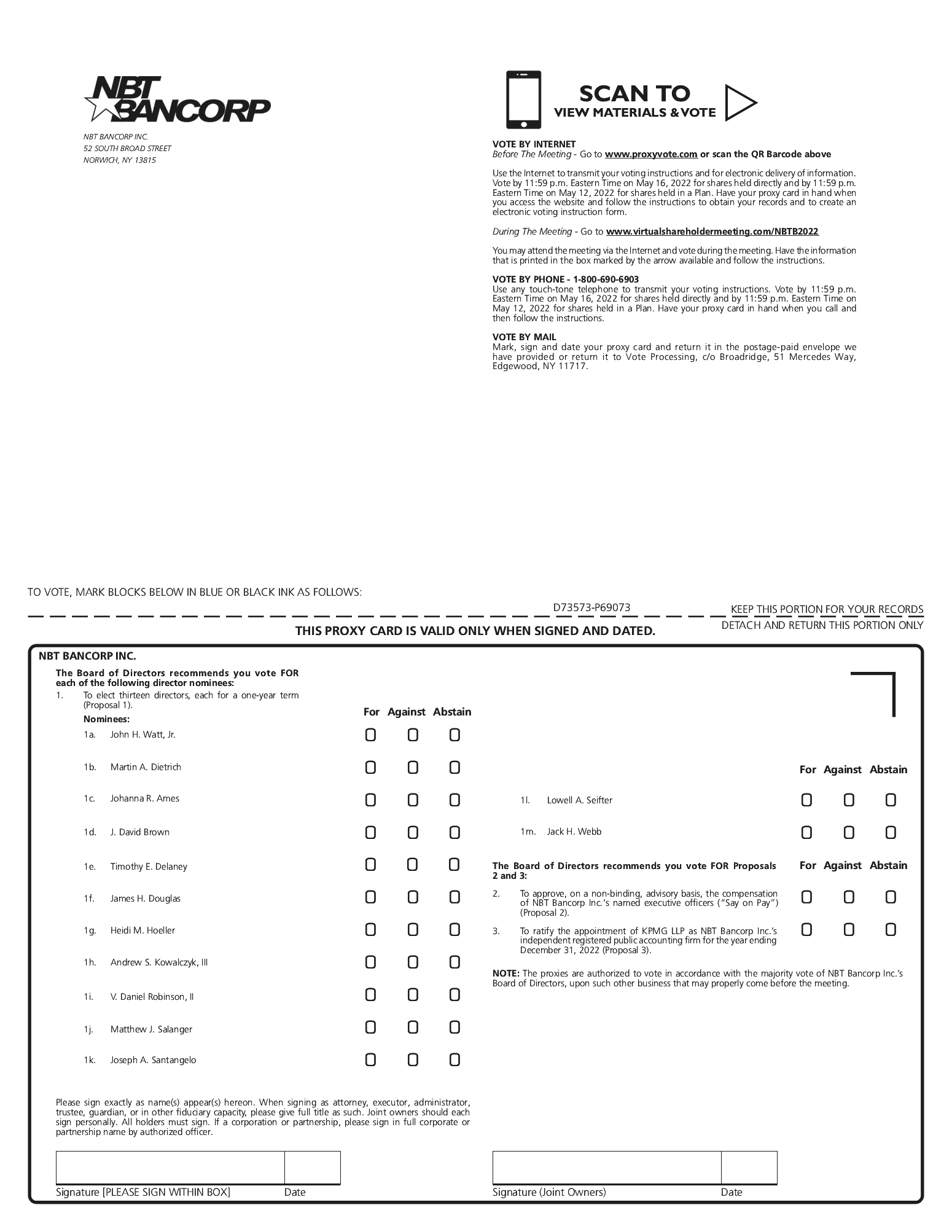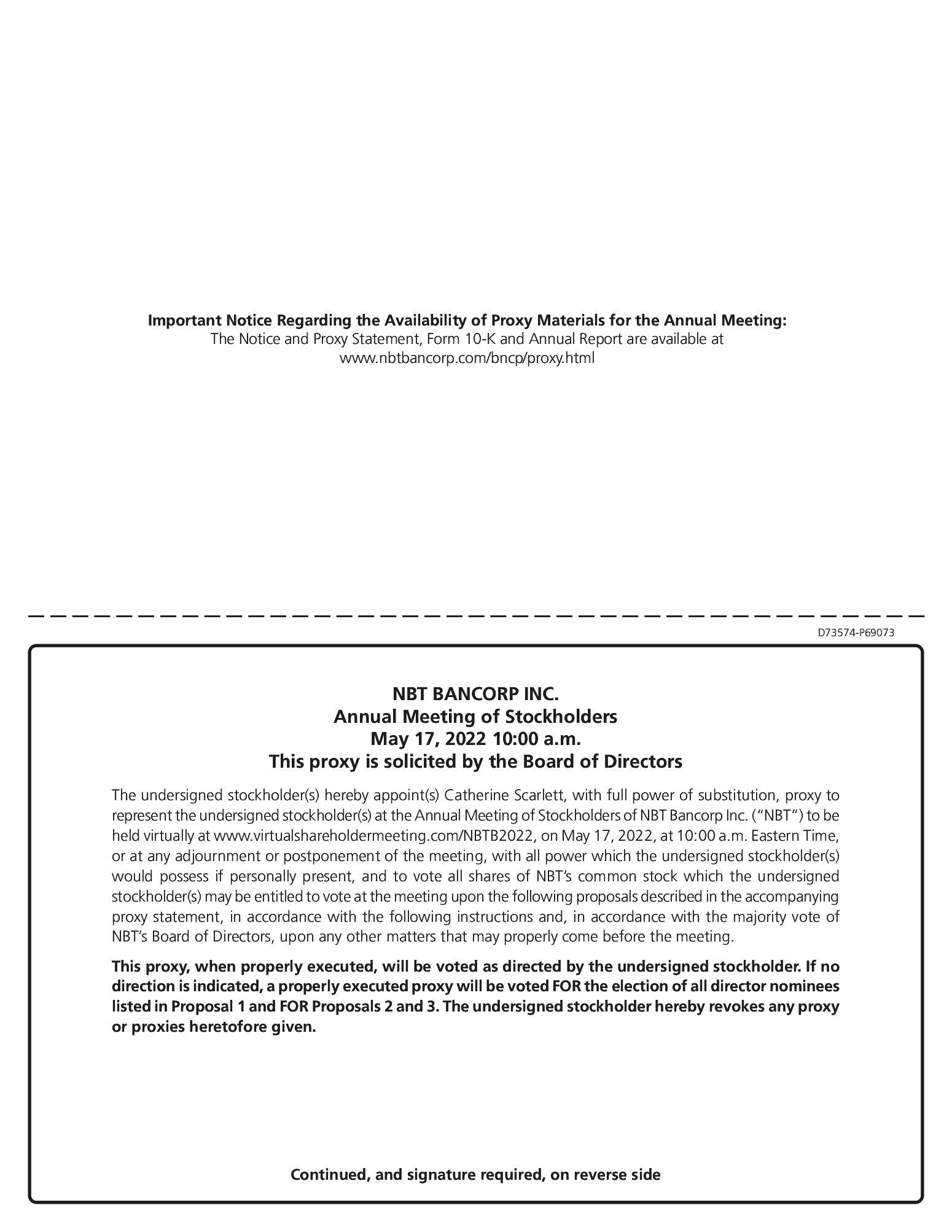If you are a stockholder whose shares are registered in your name, you may vote your shares by using one of the following methods:
Via the Internet. If you hold NBT common stock in your own name and not through a broker or other nominee, you can vote your shares of NBT common stock electronically via the Internet. Internet voting procedures are designed to authenticate stockholders by using the individual control number on your proxy card. If you vote via the Internet, you do not need to return your proxy card.
• | Before the Meeting – Go to www.proxyvote.com. Internet voting is available 24 hours a day until 11:59 p.m. Eastern Time on May 16, 2022 for shares held directly and by 11:59 p.m. Eastern Time on May 12, 2022 for shares held in a Plan. |
• | During the Meeting – Go to www.virtualshareholdermeeting.com/NBTB2022 |
Mail. To grant your proxy by mail, please complete your proxy card and sign, date and return it in the enclosed envelope. To be valid, a returned proxy card must be signed and dated.
Telephone. If you hold NBT common stock in your own name and not through a broker or other nominee, you can vote your shares of NBT common stock by telephone by dialing the toll-free telephone number 1-800-690-6903. Telephone voting is available 24 hours a day until 11:59 p.m. Eastern Time on May 16 2022 for shares held directly and by 11:59 p.m. Eastern Time on May 12, 2022 for shares held in a Plan. Telephone voting procedures are designed to authenticate stockholders by using the individual control number on your proxy card. If you vote by telephone, you do not need to return your proxy card.
If your shares are registered in the name of a bank or brokerage firm you will receive instructions from your holder of record that must be followed in order for the record holder to vote the shares per your instructions. Many banks and brokerage firms have a process for their beneficial holders to provide instructions over the telephone or via the Internet.
Changing Your Vote
Any NBT stockholder of record giving a proxy may revoke the proxy in one or more of the following ways:
• | Delivering a written notice of revocation to the Corporate Secretary of NBT bearing a later date than the proxy; |
• | Submitting a later-dated proxy by mail, telephone or via the Internet; or |
• | Voting during the meeting via the Internet at www.virtualshareholdermeeting.com/NBTB2022 |
You should send any written notice of revocation or subsequent proxy to NBT Bancorp Inc., 52 South Broad Street, Norwich, New York 13815, Attention: Catherine Scarlett, Corporate Secretary. Any later-dated proxy submitted by telephone or via the Internet must be submitted prior to 11:59 p.m. Eastern Time on May 16, 2022 for shares held directly and by 11:59 p.m. Eastern Time on May 12, 2022 for shares held in a Plan.
If you hold shares through a bank or brokerage firm, you must contact that firm to revoke any prior voting instructions.
Solicitation of Proxies and Costs
We will bear our own costs of soliciting of proxies. We will reimburse brokerage houses, fiduciaries, nominees and others for their out-of-pocket expenses in forwarding proxy materials to owners of shares of our common stock held in their names. In addition to the solicitation of proxies by use of the mail, we may solicit proxies from our stockholders by directors, officers and employees acting on our behalf in person or by telephone, facsimile or other appropriate means of communications. We will not pay any additional compensation, except for reimbursement of reasonable out-of-pocket expenses, to our directors, officers and employees in connection with the solicitation. You may direct any questions or requests for assistance regarding this proxy statement to Catherine Scarlett, Corporate Secretary, by telephone at (607) 337-6530 or by email at cscarlett@nbtbank.com.
Annual Report
A copy of our 2021 Annual Report accompanies this Proxy Statement. NBT is required to file an annual report on Form 10-K for its 2021 fiscal year with the Securities and Exchange Commission (“SEC”). Stockholders may obtain, free of charge, a copy of the Form 10-K by writing to: NBT Bancorp Inc., 52 South Broad Street, Norwich, New York 13815, Attention: Catherine Scarlett, Corporate Secretary. Our annual report on Form 10-K is available on our website www.nbtbancorp.com.
REGARDLESS OF THE NUMBER OF SHARES YOU OWN, YOUR VOTE IS IMPORTANT TO US. PLEASE VOTE BY TELEPHONE, VIA THE INTERNET USING THE INTERNET ADDRESS ON YOUR PROXY CARD OR BY COMPLETING, SIGNING, DATING AND PROMPTLY RETURNING THE ACCOMPANYING PROXY CARD IN THE ENCLOSED POSTAGE-PAID ENVELOPE.
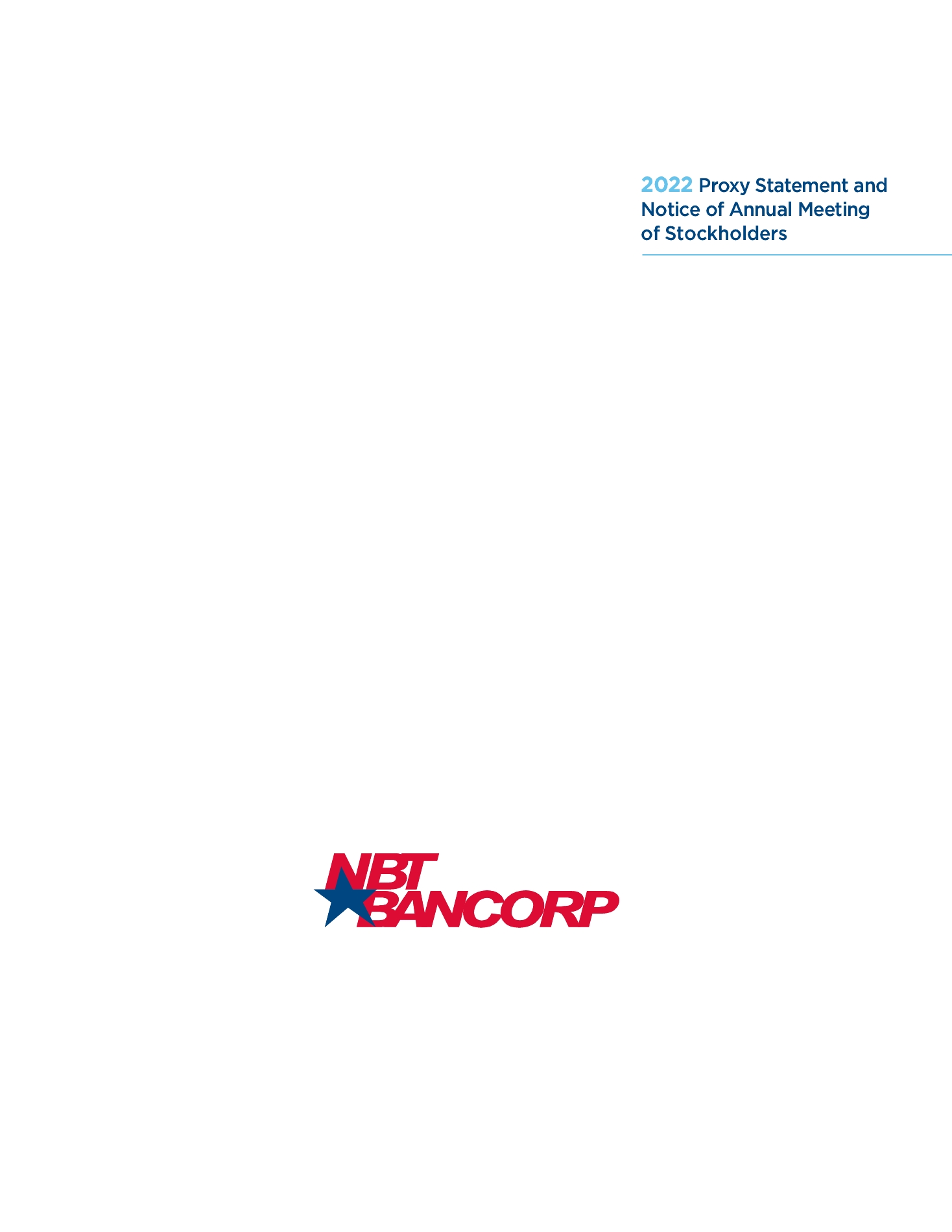
 1
1














